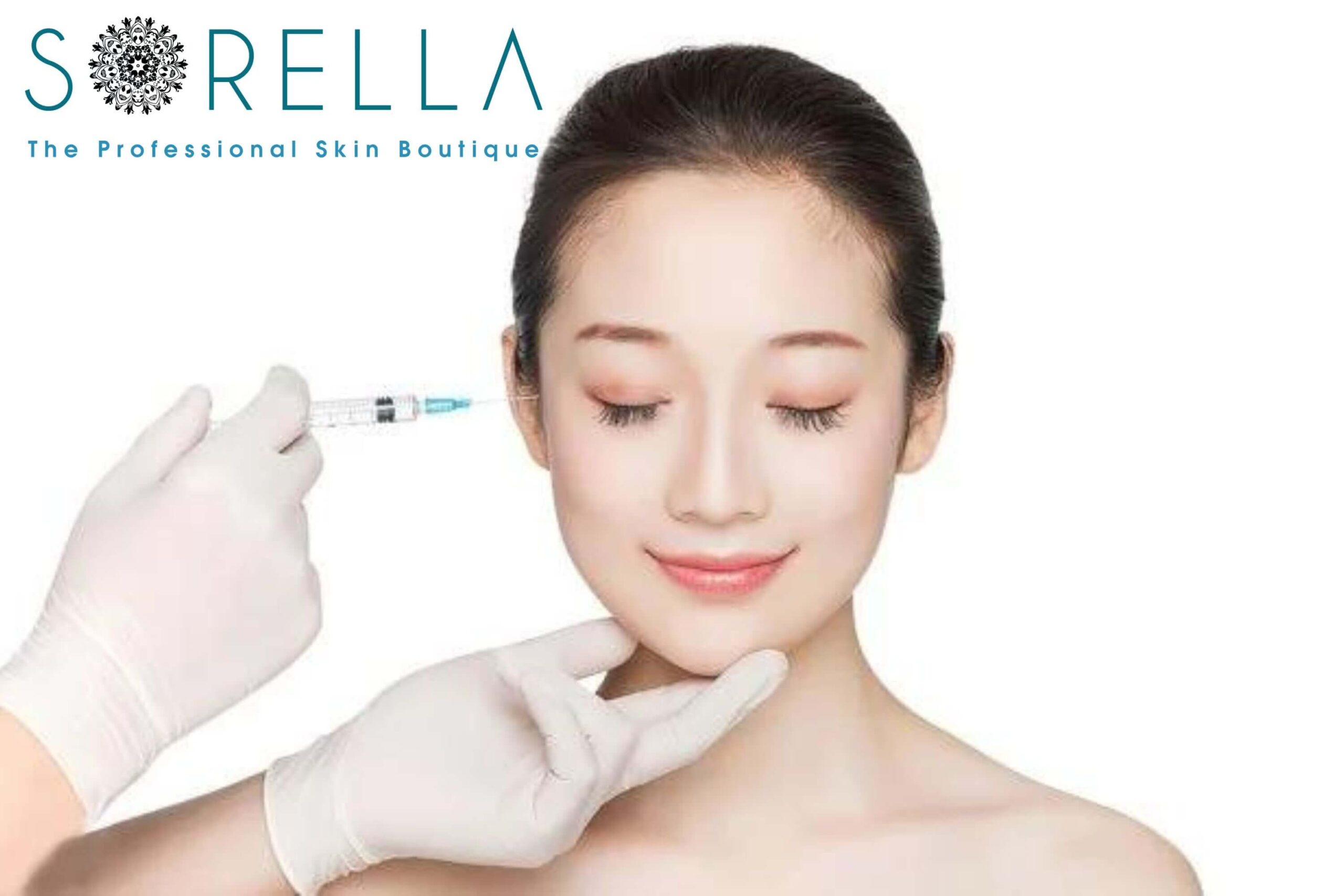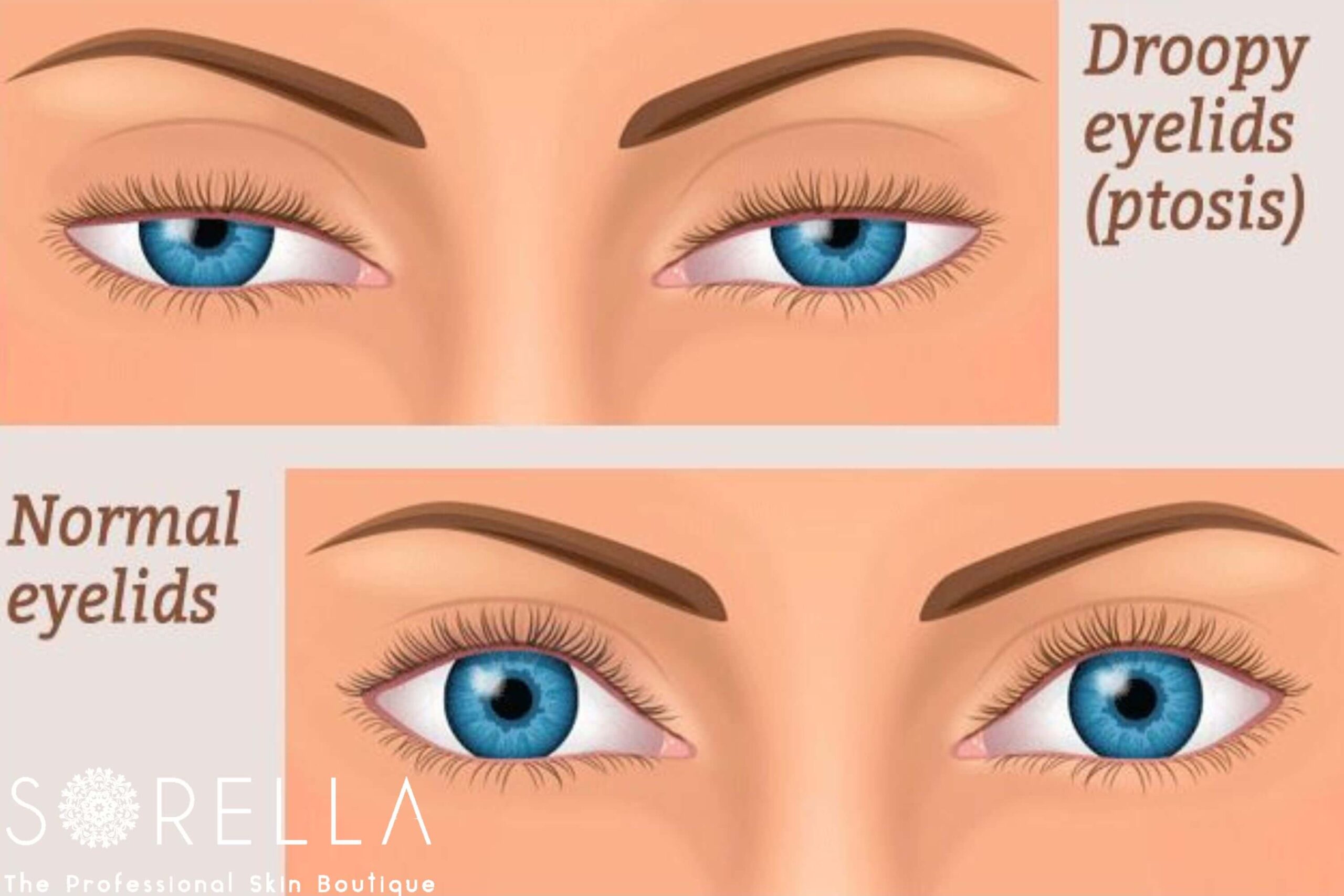Bí quyết làm đẹp
Botox and 8 side effects of Botox shots that you should know
Everyone wants to look younger and forever in their best form. They can try multiple ways to maintain their look like eating healthy, sleeping 8 hours per day, exercising, and skincare. However, human can not fight against time, their skin will eventually degenerate and start to wrinkle. That is when Botox steps in. With how fast the effect of the shots, most people, especially women, love them.
However, Botox injections have a serious drawback if you go to spas and beauty clinics that have no certificate or are legal to perform Botox shots. In this article: ” Botox and 8 side effects of Botox shots”, Sorella Beauty will provide you with some of the common side effects and risks that may appear after you have botox injections.
What is Botox?
Botox injections involve the use of a toxin to temporarily immobilize a muscle, commonly utilized to reduce facial wrinkles. Additionally, they are employed in the treatment of neck spasms, excessive sweating, hyperactive bladder, strabismus, and various other medical conditions. Botox injections have also shown potential in migraine prevention.

The medicine used in Botox injections is indeed made from a toxin that causes a type of food poisoning called botulism. But, there is no need to be afraid, the botulinum toxin used by licensed healthcare providers meets medical control standards. The U.S. Food and Drug Administration has given its approval to these standards.
Generally, when used correctly, the bacteria toxins utilized for medical purposes pose no harm.
Why Botox?
Botox shots work by blocking certain chemical signals from the nerves that can cause muscles to contract. The most common use of these injections is to relax the facial muscles responsible for frown lines and other facial creases.
Botox injections are not a cure for illness, but to ease symptoms of some health conditions. Here are some medical conditions that might be treated with Botox injections including:
Cervical dystonia, also called neck spasms. In this condition, the person’s neck muscles contract in an uncontrolled way. This causes the head to twist or turn weirdly, making that person to be in pain and uncomfortable.
Botox can also be used for other muscle spasms. Cerebral palsy and other nervous system conditions can cause the limbs to pull in toward the center of the body. Eye twitching is caused by, you can guess it, muscle spasms.
Lazy eyes can be called crossed eyes or misaligned eyes. One of the most common causes of lazy eye is an imbalance in the recti and oblique muscles, the muscles used for moving the eyes.

You heard it right, botox can be used for conditions like excessive sweating or hyperhidrosis, which is a condition that makes people sweat a lot even when they’re not getting hot or working up a sweat.
Most people think Botox is only for beauty treatment. However, these injections can also be used for migraine to help reduce the frequency of migraine. People who have headaches for 15 days or more a month can use this treatment. You may get chronic migraine if you get serious headaches often. To retain the benefit, you will need treatment about every three months.
Urinary issues can be effectively addressed with Botox injections, which can also alleviate urinary incontinence resulting from an overactive bladder.
8 side effects of Botox shots
Botox injections are generally considered safe when administered by a qualified and experienced healthcare professional. However, if the procedure is performed incorrectly, it can lead to adverse effects and potential harm. Some of the possible side effects and undesired outcomes may include:
Pain, swelling, or bruising at the injection site
Normally, the injection site is painful a bit after a shot. But if it keeps swelling or bruising at the injection area, a cold pack applied to the area may help. To prevent bruising, try to avoid rubbing or massaging the area where you had the injections for a few days after receiving Botox; this will also help avoid spreading the toxin into other areas and causing more problems.
Headache or flu-like symptoms
After receiving botox shots, sometimes, individuals will have flu-like symptoms. These symptoms are often caused by allergic reactions, infection, or incorrect administration of the infection. The most common indications associated with Botox shots are headaches, nausea, and fatigue. In some other cases, there is even fever, sore throat, or chills. These symptoms are usually mild and short-lived.
If the symptoms are severe and get serious day by day, or persist for more than a few days, you should immediately seek medical attention and get treatment as soon as possible.
Droopy eyelids or crooked eyebrows
If you take Botox injection on your forehead, then the frontalis muscle is responsible for raising eyebrows and may become too relaxed, which results in droopy brows, and droopy eyelids sometimes. This side effect can also be called Brow ptosis, normally going away after four weeks, and to some people, the ptosis can be resolved sooner. The longer it stays, the worse it will be; if your eyebrow is still droopy, it would be best to ask for medical treatment.

A crooked smile or drooling
A crooked smile may also occur if Botox moves away from the intended injection site. This migration is typically caused by errors made by the provider, such as injecting at the wrong angle or depth. When Botox is mistakenly injected into the depressor labii muscle, it can temporarily paralyze that muscle and restrict movement on that side of the mouth. As a result, the patient may have a stiff and fixed expression, giving the appearance of being “frozen.”
The correct location to inject Botox, in this case, is the nearby depressor anguli oris muscle. This muscle is often targeted by patients who wish to diminish facial lines and wrinkles around the mouth. Due to their proximity, inexperienced providers often fail to accurately inject the depressor anguli oris muscle.
Infection at the injection site.
Rarely, the medicine may spread to parts of the body where it isn’t supposed to go. It can cause symptoms there. Call your healthcare provider right away if you have any of these symptoms hours or weeks after your procedure:
Vision problems
The areas around the eyes carry the highest level of risk when it comes to injections, and they are frequently targeted to address crow’s feet and brow lines. Following the administration of Botox, the eyes may experience significant irritation and dryness, leading to a pronounced redness and bloodshot appearance. This irritation can escalate further, resulting in blurred vision and impaired visual acuity.
Breathing problems
Botulism has the potential to weaken the muscles responsible for breathing, resulting in respiratory difficulties and potentially fatal outcomes. Hospital treatment may be necessary. Seeking immediate medical assistance is crucial if experiencing breathing, swallowing, or speaking issues following Botox injections. In case of life-threatening symptoms, contact the local emergency services.

Allergic reaction
Although uncommon, they can be severe. Symptoms of allergic reactions may consist of itchiness, skin rash, swelling, or even anaphylaxis. These responses may manifest shortly after the injection, but delayed allergic reactions are also a possibility. Allergic reactions to Botox are infrequent but should be taken seriously.
Loss of bladder control
Botox injections used to treat bladder issues like urinary incontinence or overactive bladder can lead to urinary retention, where the bladder cannot be fully emptied naturally. Symptoms of urinary retention include a frequent urge to urinate, difficulty urinating, and a burning sensation during urination. Research shows that adults receiving Botox injections for bladder problems commonly experience urinary retention, especially those with diabetes or multiple sclerosis.
However, urinary retention has not been observed in children receiving Botox injections for bladder issues, although these studies only included children who were already using a catheter to empty their bladder
As a rule, healthcare providers don’t recommend Botox if you’re pregnant or breastfeeding.
Question
Does Botox injection hurt?
To begin with, it is important to understand that Botox is a swift and uncomplicated procedure suitable for nearly all individuals. The treatment itself merely requires a few minutes, yet its effects endure for several months. The sole discomfort associated with Botox is a mild pinching sensation caused by the injection needle. However, before the procedure, an anesthetic cream or cooling gel will be applied to the area to ensure numbness.
How long does Botox last?
Sadly, Botox does not have a permanent effect, much as we may desire it to. Eventually, the neurotoxin’s impact will diminish, allowing the nerves to resume transmitting signals to the muscles, thereby initiating their movement or contraction. Typically, the effects of Botox persist for 3-4 months.

However, it is worth noting that some patients may observe a longer duration of effectiveness, ranging from 4-6 months, while others may experience a shorter duration of around 2 months. Additionally, individuals who are receiving Botox for the first time may notice that its effects do not last as long initially, but with subsequent treatments, the duration of effectiveness may increase. It is important to recognize that each person’s experience with Botox is unique, and results may vary.
When should I start Botox?
Even when the legal age for Botox shot is 18; it is recommended to consider starting Botox treatment when you notice the first signs of fine lines or wrinkles on your skin, typically in your mid-20s or early 30s. Even the slightest lines can indicate the potential formation of wrinkles in that specific area of the skin.
Can botox injections be reversed?
There is no reversal for Botox from a technical standpoint. After it takes effect, one must either wait for it to naturally fade or consider enhancing the effects if feasible.
Tư vấn chuyên môn bài viết:
TS.BÁC SĨ NGUYỄN HỮU QUANG
6 Simple Ways to Remove Nail Polish
Eyebrow sculpting and eyebrow spray: What should you choose in 2023?
Should you use stem cells or collagen for the Lip Spray Process? 4 things that you should know
8 Methods of hair removal that are often utilized
- Sinh năm 1930 mệnh gì? Hợp tuổi nào? Hợp màu gì? Hợp hướng nào?
- Top 6 cách se khít lỗ chân lông da mặt hiệu quả, nhanh chóng
- 10 nguyên nhân gàu da đầu và cách điều trị
- Dấu hiệu của bệnh gan là gì? Top 13 dấu hiệu giúp nhận biết gan có vấn đề
- 12 Things You Should Know About Laser Hair Removal Before Getting It
Bài viết cùng chủ đề:
-
Nên lựa chọn Rejuran hay Karisma?
-
So sánh Karisma và Profhilo – 2 phương pháp trẻ hóa da tầng sâu đỉnh cao
-
Cách diệt chấy rận hiệu quả ngay tại nhà, 8 phương pháp tiêu diệt chấy rận hiệu quả
-
Có nên dùng khăn ướt để tẩy trang? Cẩn thận khi dùng khăn giấy ướt giúp chăm sóc làn da của bạn, 1 vài thành phần của giáy ướt có hại cho da


 中文 (中国)
中文 (中国) 한국어
한국어 English
English





